Readers have submitted some great examples of gendered items in the last few months, so I’ve collected just a few here. This includes “the first gender-based wholefood,” certainly a milestone worth commemorating, so let’s get to it!
An anonymous reader pointed out that Barnes & Noble has book collections for boys and girls:
The summaries of the books reinforce ideas about gender and especially the association of boys with action and girls with relationships. The description of the boys’ collection mentions “excitement” and “tales of action, adventure, and exploration”:
The girls’ collection, on the other hand, includes “heartwarming tales” that teach us that “friendship is the most priceless and enduring gift of all”:
Nora Goerne sent in girls’ and boys’ pasta she saw in Dutch supermarket Albert Heijn:
And Emily discovered you can get gender-specific yogurt for kids:
Nick O. noticed these bottle-opener rings, one of which is marketed to women by putting it on a pink background with the word “woman” on it but otherwise seemed the same to Nick:
Carrie J. sent in this ad for gendered kids computers from 1999:
Shara found boys’ and girls’ cake sprinkles in New Zealand:
CBH was looking for birthday supplies on the Party City website and noticed that according to the decorations, by their first birthday girls are already “angels” and boys are “rebels”:
Helen S. sent us this image posted at Boing Boing of crayon sets that are implicitly gendered through the use of the colors and terms (especially “princess”) that have become codes for boys and girls:
Green gloves are apparently for boys now (thanks, Michelle):
And finally, as promised: You will be relieved to know that “the first gender-based wholefood” is here, and not a moment too soon. According to the website for Sexcereal — no, stop laughing, this is serious — the female version supports “hormonal balance” while the male version has ingredients that “support testosterone and then some,” which actually makes me afraid this product might cause ‘roid rage if eaten too often:
Their website (sent in by Vanessa K.) is an absolute delight, and provides many a hearty laugh. It’s just too bad Sexcereal is only available in Canada. All of us non-Canadians are stuck eating our stupid unisex cereals, leaving our hormones unbalanced and our testosterone feeling sadly unsupported, and then some.
Gwen Sharp is an associate professor of sociology at Nevada State College. You can follow her on Twitter at @gwensharpnv.

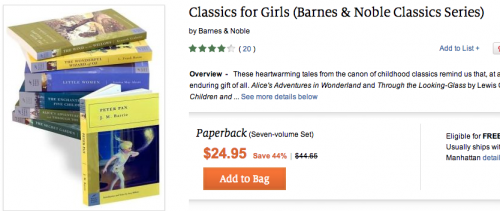

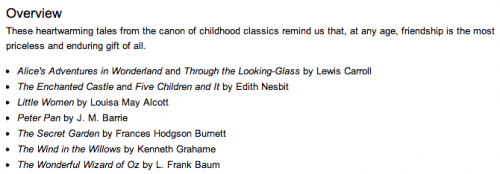

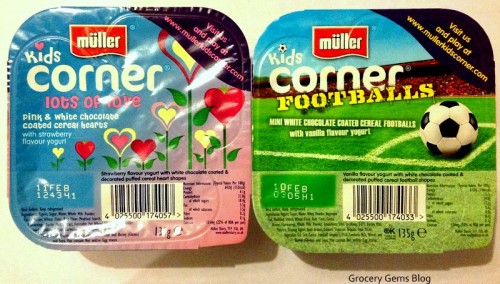
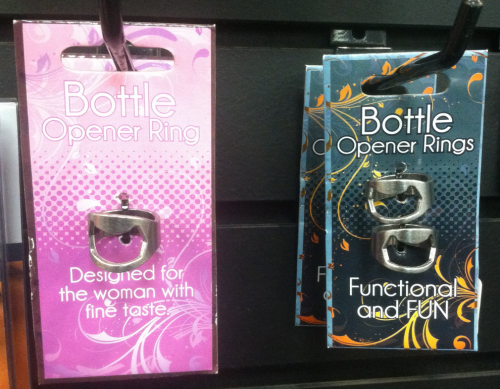
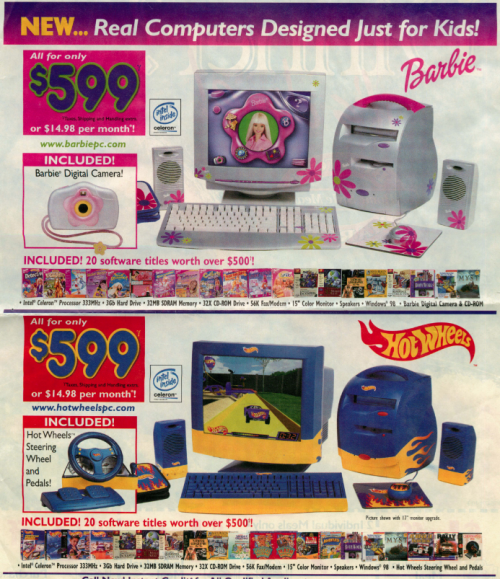
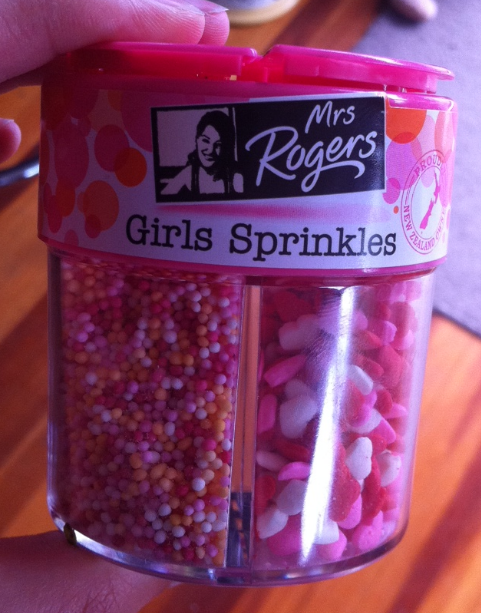
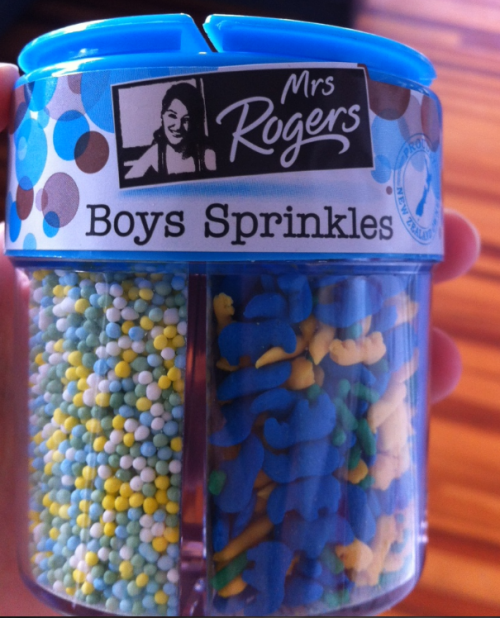
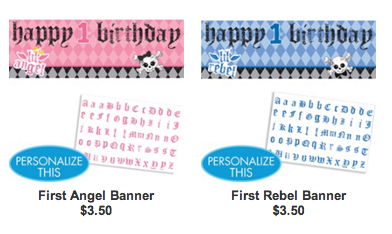

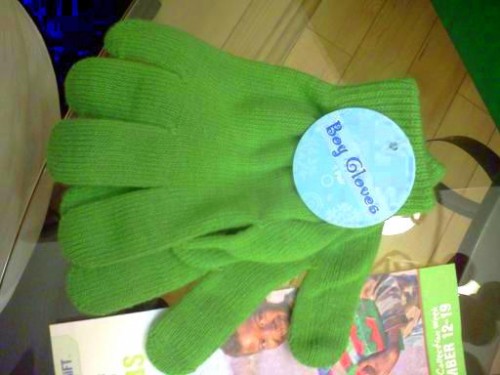
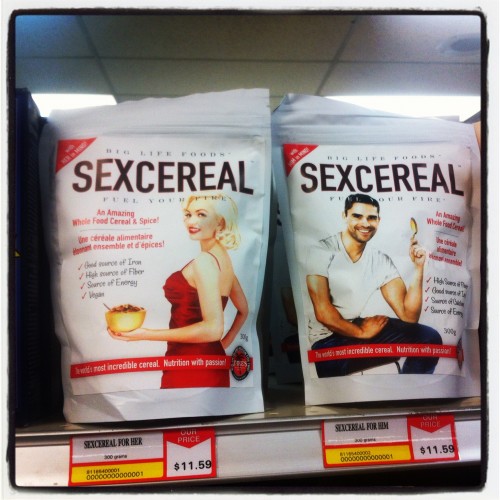
Comments 71
Aecritter — February 20, 2013
Generally, I am all for these ridiculous gender division posts, but I would like to defend the divide in book categories (at least partially, sort of..). Girls and boys should both be getting stories of friendship and stories of adventure, but that is not the case, I think in part because of the audience the books were written for.
As much as the book collections divide on subject matter, they also divide on the gender of the main character. In this case, I think it is possible that the girls collections were created with the gender of the main character in mind, rather than just the friendship/adventure binary. (note that the Carroll, Barrie, and Baum books are more than just "girly friendship" books, but that, because their main cast of characters includes a girl, they get put in the "girls books" section).
If you do happen to be a girl, the girls' collection, while unfortunately excluding boys, allows you to find some of the few main characters in classic children's lit who are also girls. As someone who was once a young girl reader, I can honestly say that I did enjoy reading books with both boy and girl leads, but that girl leads were especially exciting because I was a girl and they were relatively rare. This gets into similar problems with movies and gender and boy/man as the default character that everyone is expected to like, which is frustrating. But what do you do with collections that highlight women? They still uphold the binary, but they also represent a much less common category, so is creating a set that highlights them a problem? I suppose they could have just been mixed together, but that might have been to progressive for our society. Kind of like boys playing with Barbies.
I'm feeling less like I defended this now. I'm pretty ok with that.
Anna — February 20, 2013
Um, men and women do have different nutritional needs, much of it stemming from differences in male and female hormones. The cereal sounds really stupid, but in general, the idea that people are affected hormonally through diet, and men and women have different nutritional needs largely as a result of this, is not a laughing matter. I find the gendered sprinkles hilarious, especially as they have no nutritional value, and boys and girls have more or less the same nutritional needs until around the age of 10.
But after that, sex does play a significant role in dietary needs and hormonal balance, and let's not forget that cereals are often fortified with various added nutrients. Leaving out for a moment the fact that food fortification is very controversial, the idea of a sex-specific fortified cereal is not a ridiculous thing at all.
Andrea — February 20, 2013
I always find these gendering posts interesting and a little disturbing, however maybe I'm missing something, but nowhere on the yogurt or the computers can I find it actually labeling the products as "for girls" or "for boys". Surprisingly both seem to be labeled as just general "kids" products. They don't even have boys or girls pictured using the items.
I don't mind when there are two versions of something, my problem is always when they are labeled to imply that one is ONLY boys and one is ONLY girls and never the twain shall meet. These two products seem to actually be doing what we want...yes, there are two versions, but they don't seem to be blatantly gendering them.
Ted_Howard — February 20, 2013
On the Barnes & Noble series - The difference between the boys' vs. girls' collection is not just in the content (e.g. adventure vs. heartwarming tales) but the boys' collection is more "mature." I'm not necessarily talking about reading level (because I don't know what the reading levels of these books are, but my guess is that boys' collection seems a few years higher), but the themes involved are much more mature in the boys' collection. Thematically, "Kim," "The Strange Case …", and "'Gulliver's Travels" are much more mature and adult-oriented than themes of "Through the Looking Glass," "The Wind in the Willows," and "The Secret Garden,". I'm not sure what the gender bias is here. Do we think boys' start reading "serious" works at a later age, so the books are more mature? Or is the bias that we think girls aren't yet prepared, intellectually or emotionally, for the more mature offerings of "boy literature," ?
As a male, I also dislike the idea the boys can only enjoy so-called "boy books." I loved Alice, Through the Looking Glass, and The Secret Garden as a kid. Also, since when is "The Wind in the Willows" a gendered book? That book is a masterpiece of not just "children's literature," but all of english literature. Every child should read that magnificent book, hell every adult should read it if they haven't. It's wonderful.
Sexcereal « Feminist Philosophers — February 20, 2013
[...] Now that I’ve stopped laughing and can breathe again, I can share this website that I came across through a Sociological Images article. [...]
TK — February 20, 2013
It's been a while since I've read those children's classics, but IIRC even the ones for girls with female leads have one or more very prominent male characters (Peter Pan and Hook, Dickon, the Tin Man et al). Wonder what the distribution is like for the boys' books.
Tusconian — February 20, 2013
Some of these gendered products are not actually gendered. Implicitly, maybe, but where does it say "this yogurt is for girls/boys," or "Barbie computer for girls, Hot Wheels computer for boys" (though I wish I could see the game titles included in each, not to mention how silly it is to buy a kid in the Hot Wheels/Barbie stage a 600 dollar computer with fairly age-specific decorations on it)? Simply assuming that anything that has pink on it is for girls, anything with sports on it for boys is just as presumptuous as assuming a boy can't want (or would terribly mind) something colored pink, and a girl can't want something with sports on it. And that attitude, to me, also criticizes the fact that products are available in a multitude of designs or colors that aren't purely functional. Yes, in our society, something that is pink is going to be assumed to be "for girls" or "for women" unless there's reason to believe otherwise. But in many of those cases, pink/flowers/pastel is just one of a handful of optional designs for something. When I was shopping for linens when I first went to college, the "trendy" color combinations were pink/beige/white and blue/navy/grey, and everything was plaid or floral (in either color combination). Yes, there was the subtle implication that the blue linens were for boys, the pink linens were for girls....but thank god they were there, because I can't stand the color blue for room decor, and there were very few other inexpensive options. And I saw plenty of girls in the dorms using the blue linens, and at least one boy using the pink ones. Usually when things are only available in one color, to avoid scaring away male consumers, they automatically shy away from a lot of colors that are popular among both men and women, towards colors that are either very dark and neutral, or eye-searingly bright (usually black, dark blue, or traffic-cone orange). First world problems, but when something comes in a variety of options, why is it only a problem if pink or purple items are included? Some people like pink or purple. A better question than "why are two different flavors of yogurt sold in different colored packages" or "why were pink and blue inexplicably the most popular and seemingly only options for twin-sized sheets in summer of 2008" is, why do we automatically assume everything pink excludes males, and everything sports related excludes girls when there's no actual text or visual indication that they aren't unisex (for example, the sports yogurt only shows a soccer ball, not a male athlete)? And why do we condition men to shriek away in fear if something isn't oozing implied masculinity as if they'll die if they even stand next to the pink power tools while purchasing the orange ones?
The book thing, on the other hand, bothers me immensely. It makes me wonder, are male children ever encouraged to read books with prominent female characters outside of class (and aside from the Scarlet Letter and a few Holocaust memoirs, I recall very few requires books with female protagonists prior to about tenth grade). When I was in 2nd, 3rd, and 4th grade, our teachers fought tooth and nail to make sure the girls weren't reading too much Babysitter's Club and Nancy Drew, to convince us that we didn't only have to read "girl books," but boys reading exclusively Wishbone or the Hardy Boys were never questioned. On the one hand, I get that part of it was to "empower" girls, but how can that fully happen if half of school children have never been exposed to the idea that female people can be dynamic characters? Shunning anything with a fantasy theme or female protagonist is pretty par for the course for school-aged boys, but it doesn't seem to be nearly as much a priority to convince boys to diversify when it comes to reading material
Robert Carnegie — February 21, 2013
Both of the birthday decorations have a skull and crossbones on, but the girl skull is wearing a sweet little bow. I'm not sure how or why, since of course it hasn't got any hair.
A certain amount of this stuff looks to me like it's made in China by people with a fairly vague idea of what foreigners want, and playing it safe, in particular the Princess Crayon Set and Truck Crayon set. The different colour range in each is a nice subtle touch, showing that these products aren't sex-labelled arbitrarily, they are also programming you for the appropriate gender role. If your little boy prefers the Princess set, then, well, then you know, don't you? ;-)
Robert Paulbringer — February 21, 2013
Turns out people have genders - surprise!
Joshua Barnett — February 21, 2013
I dont see the big issue, is it not clear that boys enjoy some things more that girls or need something more than a girl would need it and visa versa? you can clearly see that companies like nerf are triggered toward boys and never show a girl in their advertisements, and the same the other way around for girls. Is this not how our world works? of corse it may seem bad to some people that genders might have certain stereotypes attached to them, but does this really matter THAT much?
Fred hgggg — February 21, 2013
have you ever tried giving a 5 year old a pink toy? no? good. now delete this stupid article
Village Idiot — February 21, 2013
Why no spice for the manly cereal? It's not like spice is gendered as female ("Old Spice" aftershave comes to mind) though I guess "spiciness" may be. Or did "The Spice Girls" ruin spice for guys?
And on the packaging, she looks like she's turning to leave with her big bowl of Sexcereal (it's almost as big as her head! That's a LOT of Sexcereal!) to go to a semi-formal cocktail party, or maybe the pose is to show us the great ass she got from eating it (against all odds, considering how big her bowl of carbs is)? But the man looks like he's getting ready to clean out the garage on his day off or something (at least his enormous spoon is erect!).
blaher — February 21, 2013
I agree, with all the problems facing the world and children, the most important issue is to ban selling pink things to girls and blue things to boys! Heaven forbid we expect kids to be smart enough to find their own way or *gasp* actually choose of their own free will to enjoy things their sex has a reputation for enjoying leading to the targeted marketing in the first place. Girls must be ashamed to prefer flowers and pink and boys must be ashamed to like action figures and toy guns. Androgny, its not a choice, its a mandate that must be beaten into everybody whether they like it or not. Hail enlightened equality!
Toy companies start marketing sexism as progressive | Reel Girl — February 21, 2013
[...] image, via The Society Pages, is so stupid its almost funny. If this product looks ridiculous to you, so should Nerf’s [...]
McBob — February 21, 2013
How did I know this article was going to have been written by a woman? You won't be happy until we are all androgynous...
Uncle Jimmy — February 21, 2013
This article (and concept) is ridiculous. Stereotypes are based on truth and that the truth, in this case gendering, applies to the majority of people it is based on. If you happen to be someone who falls outside of a particular stereotype, good for you - there is nothing right or wrong about that.
Boys like fast cars, flames, and the color blue. Girls like flowers, pretty things, and the color pink. Mexican people like tacos. White southern folks like a new cold glass of ice tea.
Get over this politically incorrect nonsense and enjoy your life. Idiots.
Anna — February 21, 2013
I live in Canada and have not yet seen the Sexcereal. Now I'll have to keep an eye out. However, I have seen the Holy Crap! cereal that is so full of nutrients that two bites meets a number of daily nutritional requirements. It's unisex, though, and wildly expensive (because of all those nutrients).
The gendered products debate, especially for children, has been on my mind frequently because my husband and I are expecting our first child. Since we don't know the gender yet, any baby things I've bought so far have been deliberately gender-neutral, which is surprisingly hard to find. I know that should I have a boy and I end up stuffing him into a purple onesie, someone will probably chastise me for it, and if we have a girl, using one of the truck-covered sets of overalls in the bag of stuff leftover from when my brothers and I were little will also get us judged. I do enjoy girly things, but I don't want my children to feel as though they must do/like something simply because of their gender. It's hard to know how to balance all of this out, especially since I don't wish to completely isolated my family from our culture. My poor children are probably going to learn to dialogue about what different things represent quite early.
What We’ve Been Reading… « UpRoot — February 22, 2013
[...] Lisa Wade on Sociological Images: Why do we still insist on gendering everything? [...]
Lovely Links: 2/22/13 — February 22, 2013
[...] We are still gendering everything. Including [...]
ViktorNN — February 25, 2013
As they stand now, these "gendered marketing" posts feel like little contrived bubbles of groupthink rather than openings for a more in depth understanding of whats really going on when commercial interests express/reflect/reinforce/construct social norms regarding gender.
If it's beyond Sociological Images' scope to provide some more substantial, informative background to explain why corporate marketing departments find gendered marketing so successful, then at least some links to more substantive analysis would be appreciated.
‘Brogurt’: The latest in nonsensical product gendering — MSNBC — February 26, 2013
[...] ear plugs and one called “skull screws”. Even Barnes and Noble is selling book sets of “classics for boys” and “classics for girls,” because girls have no reason to read The Adventures of Tom Sawyer, and boys should evidently steer [...]
Tee OccupyAustin Mullins-Getti — February 28, 2013
I do eat a granola mix called "Women's Vitality Mix" from HEB in the USA. It happens to have several foods that are known to be good for typical women's problems, like a heavy amount of cranberries for the bladder infections that women get in such high numbers.
That said, my husband enjoys the almonds and chocolate chips.
Anon — March 7, 2013
Is this a huge deal, really? If you are a girl who likes soccer, then buy the soccer yogurt. Like barbie? then buy a barbie doll for god's sake, who cares what people think about it. Putting a giant neon sign over the 'issue', like this article does, makes it bigger than it has to be.
KyukiYoshida — June 19, 2013
So, green is for boys now, I always thought it was a gender neutral color. I guess some companies are really going out of their way to make sure that girls are pink and purple only, and the rest of the color scale is for boys.
Johanna Saarni — September 5, 2013
yay for gendering!
Anti — November 27, 2013
I often find that products for women are often of lesser quality. Went to the store with my friend the other day, spent half an hour looking for heavy, warm socks to wear in my boots. The reason it took so long is because all the womens socks had words like 'Princess' or bows or glitter thread or lacy fringe, which will rub the shit out of you ankle after away in your boots, but mostly because they sacrificed warmth, for aesthetic appeal. I just wanted warm socks and all the socks that I liked, were mens sock. I finally had to settle on getting the smallest mens size they had. My point being, is that I often find that products directed towards woman, like sweaters, shirts, mittens, socks and other clothing, often is made of cheap, itchy, thin and none to warm materials in order to make it visually appealing and form fitting. I don't think I'd have been so angry if the socks had been warm and comfortable like the mens socks- but they weren't. The same thing happened when I was shopping for gloves earlier this month too.
Snilld — November 28, 2013
In Iceland there came an icecream marketed to boys (blue and labeled "icecream for boys") and girls, and also a pink and blue helmets were given out to children but neither girls or boys could choose other colour than targeted one to their gender.
The public was in outrage and only a week after both incidents, the two things were not available anymore. Just shows that if the public takes action it can be possible to take these products out of the market.
Multicultural Etiquette (Part 2): How can we practice it? | @JustaSymbol — May 11, 2014
[…] also found it hard to see her as an authority figure because of her shorter height. It’s called Gendering, where everything from professions, to ranks, to inanimate objects are metaphorically or literally […]
Building Business Relationships: What is Multicultural Etiquette? | Professionality Consulting — June 3, 2014
[…] found it hard to see her as an authority figure because of her shorter height. It’s called Gendering, where everything from professions, to ranks, to inanimate objects are metaphorically or literally […]
Annie — August 22, 2014
Well, at least The Wonderful Wizard of Oz is included in the "for girls" book collection. That book has actually got a lot of action (and it's got violent parts), and Dorothy is a strong female character (especially considering the time it was written).
Multicultural Etiquette (Part 2): How can we practice it? | Culture - Speech — February 22, 2015
[…] also found it hard to see her as an authority figure because of her shorter height. It’s called Gendering, where everything from professions, to ranks, to inanimate objects are metaphorically or literally […]
Multicultural Etiquette (Part 2): How can we practice it? — February 23, 2015
[…] also found it hard to see her as an authority figure because of her shorter height. It’s called gendering, where everything from professions, to ranks, to inanimate objects are metaphorically or literally […]
Multicultural Etiquette (Part 2): How can we practice it? — February 23, 2015
[…] also found it hard to see her as an authority figure because of her shorter height. It’s called gendering, where everything from professions, to ranks, to inanimate objects are metaphorically or literally […]
Excessive gendering - J A Y M E M A R I E — July 4, 2016
[…] Our society spends so much time and energy devoted to gendering objects, ideas and actions in unnecessary ways. Fantasy football is for guys; lipstick is for girls. Harley Davidson motorcycles are for guys; skirts are for girls. Guys can be mechanics, engineers, coders, managers and CEOs. Girls can be homemakers, cooks, teachers, secretaries and nurses. Gendering is even supported through marketing campaigns and products. […]